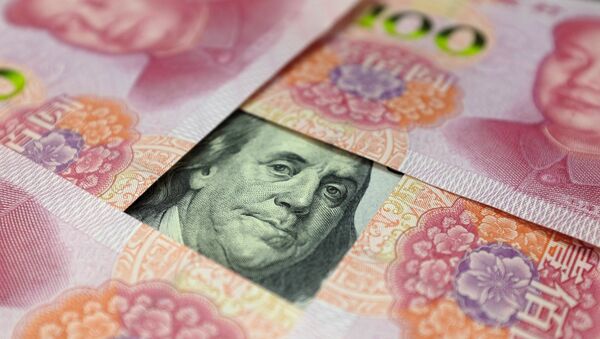Sputnik discussed Washington's move with William Yang, a Freelance Correspondent for Deutsche Welle in Taiwan.
Sputnik: What do you make of this new round of tariffs? What do you think the primary impact is going to be? Who's going to feel it the most? Is it going to affect more severely the American companies who import from China or the Chinese companies who export?
William Yang: I think in the short run both sides will feel the effect, but for American companies who rely so much on their manufacturing chains in China to produce their products, this is going to disrupt their whole supply chain, from their logistics to their actual manufacturing.
But in the short run, for the Chinese companies, because China is still primarily export-oriented economy, the increase of the tariff is definitely going to be felt pretty strongly by the Chinese economy as a whole.
READ MORE: More 'Bullets' for China: Trump Threatens Beijing With New Retaliatory Measures
Sputnik: China has said that it will respond quite strongly or reciprocally to this tariff, and I think that they're also ready to be in this in the long run, so it would seem that some Chinese companies have already started to look for new customers to replace the US. How successfully and how quickly will Chinese manufacturers be able to find new customers, new markets for their products, in light of the losses they may face from these tariffs?
William Yang: I think in terms of finding a replacement for the US market or their US customers, this is not going to be so hard for China for a couple of reasons. One is that the Chinese goods are still relatively affordably priced, so developing countries, or countries in Europe, or Latin America are still able to afford them.
So we can see that, for example, for soybean they have already reduced the amount they're importing from the US and instead they turned to other countries like Brazil, which also produces a lot of soybeans, so that's not going to create so much domestic inflation in China in the short run, so I think with Beijing's influence growing globally throughout 2018, we can see that Xi Jinping is very determined that he will be able to go head to head with the US until one side is ready to resign from their current stance and go to the negotiation table.
William Yang: Yes, you're definitely right, wages are going to be a big problem if the US companies align their actual manufacturing along with the administration's hope of bringing more jobs back to the US. I don't think big companies like Apple or Cisco; these companies they have relied primarily on the Chinese workforce in the last two decades and they have been able to earn a huge profit out of this model.
READ MORE: China Quits Trade Talks With US Amid Tariff Threats Escalation — Reports
That's pretty much the key to their success in the past two decades, and now, if they're not able to continue to operate in China because of this trade war, I don't see them immediately transferring all their manufacturing power back to the US. Instead, they might go for countries in Southeast Asia where the manpower wage is still relatively low. Vietnam has been the prime destination of a lot of companies, both in the US and Asia, for relocated manufacturing.
I don't see the migration necessarily heading back to the US, but rather heading to Southeast Asia.
The views expressed in this article are those of William Yang, and do not necessarily reflect those of Sputnik.





